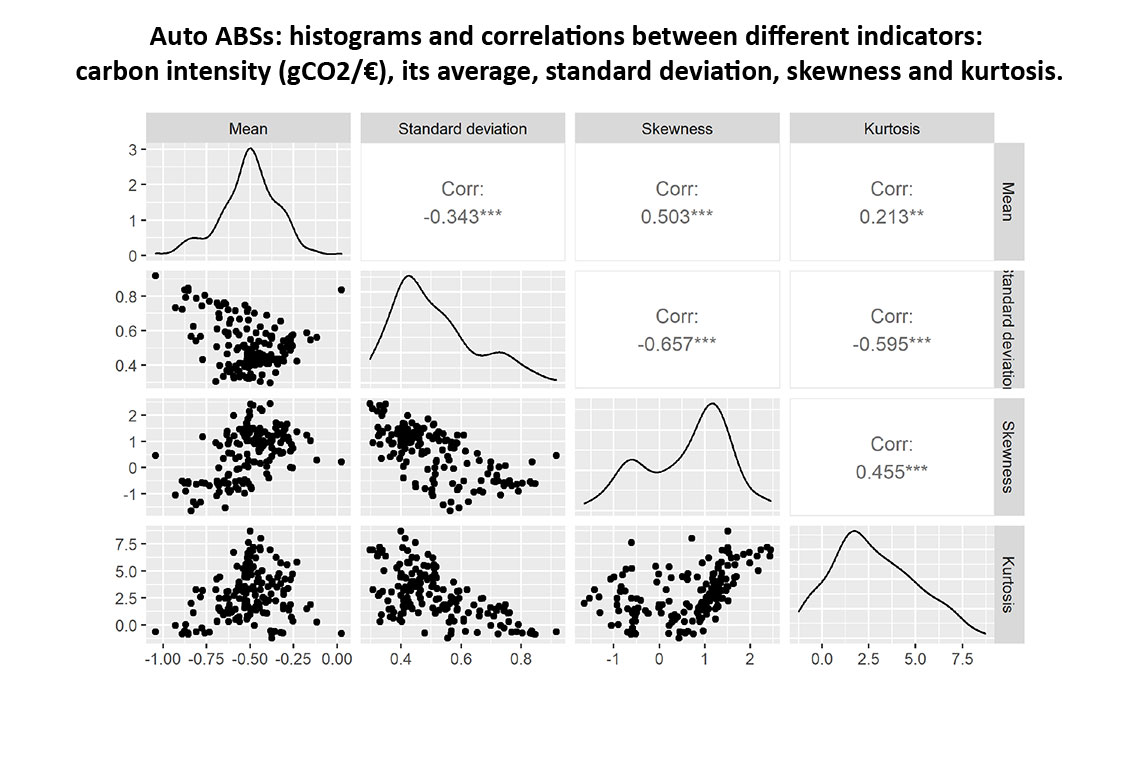
Working Paper Series no. 858: Climate Risk Measurement of Assets Eligible as Collateral for Refinancing Operations – Focus on Asset Backed Securities (ABS)
This paper analyses the exposure to climate risk of ABS, an asset class frequently pledged as collateral in the European Central Bank (ECB) refinancing operations. This paper focuses on ABS backed by auto loans or loans granted to Small and Medium Enterprises (SMEs) and explores ways to measure their climate risk based on the characteristics of the underlying loans, using existing loan-level data requirements. The ultimate goal was to come up with an alignment metric, i.e. to judge whether ABS related emissions would meet the Paris Agreements objectives, a task hindered by the lack of data available. Despite these limits, we were able to come up with relevant indicators related to ABS carbon impact, enabling the computation of ABS climate related risk proxies. Without necessarily being able to measure a concrete impact, we carved a series of indicators to serve as a reference. However, we conclude that an improved and harmonized framework for the provision of non-financial information seems essential to achieve an accurate analysis and monitoring of the financial sector's exposure to climate change.
This report describes an exploratory study regarding exposure to climate risk of ABS, an asset class frequently pledged as collateral in the ECB refinancing operations. ABS are notes backed by multiple loans, mainly issued by commercial banks. This paper focuses on a model that could best approximate the carbon footprint of Auto and SME ABS, considering the data available on the underlying loans and assets. Two aspects largely determined this purpose: the availability and quality of the extra-financial information provided, and the possibility of linking them to external databases on climate exposure or impact. The ultimate goal was to come up with an alignment metric, i.e. to judge whether ABS related emissions would meet the Paris Agreements objectives. We therefore explored the possibilities of combining ABSs loan-by-loan data with relevant indicators to assess their environmental footprint, a task hindered by the lack of data available.
Several conclusions emerged from our analysis: it seems difficult to accurately assess Auto and SME ABS climate risk at this stage, although there are ways of building a proxy. Keeping in mind the data related limits, we developed a climate impact assessment that is dynamic, differentiating and consistent. Without necessarily being able to measure a concrete impact, we carved a series of indicators to serve as a reference, as well as an analytical and monitoring tool for the composition of ABS portfolios. However, an improved and harmonized framework for the provision of non-financial information is essential to achieve an accurate analysis of ABSs exposure to climate change.
As an example, we calculated normalized indicators of the carbon intensity of loans that underlie an ABS. In the correlograms below, each point corresponds to one ABS. We show how the intensities are distributed amongst ABSs, and how their higher order moments are linked with each other. For Auto ABS we note strong correlations between statistical moments, indicating the tendency for instance that ABSs with high mean intensity are skewed to the right and have heavy tails. This would suggest that some ABSs have many standard vehicles, and a number of highly polluting vehicles, high above the intensity referential (SUVs, perhaps). There is, at this stage, no strong evidence of selection criteria based on the loans related carbon intensity.
Download the PDF version of this document

- Published on 01/07/2022
- 45 pages
- FR
- PDF (4.49 MB)
Updated on: 01/07/2022 18:30
